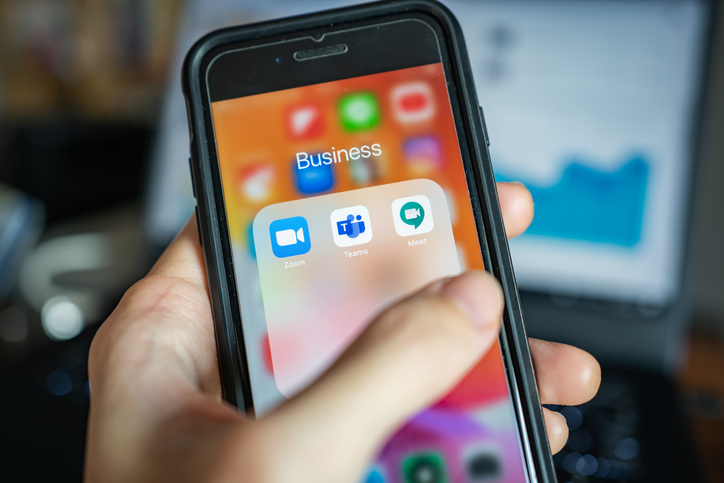Enterprise IT leaders are under pressure to keep up with growing business demands for custom applications. In doing so, IT leaders must also make sure the applications they build are helpful to their intended users — whether customers, partners, or employees.
Applications that fail to satisfy these requirements simply won’t be adopted; and without adoption, the desired business outcomes will never be achieved.
Given the continued proliferation of devices and the tendency of users to switch between them, one increasingly important aspect of usability is providing a seamless, user experience across multiple channels.
>See also: Habit-forming technology: the future of enterprise app development
Yet, few enterprise IT teams have implemented proper multi-channel design, leading to subpar user experience (UX) that negatively impacts productivity and even revenue generation.
4 principles for great multi-channel user experiences
Creating great multi-channel experiences means providing users not only with the right look and feel across all device types, but the appropriate work flow and navigation across a variety of devices.
To do so effectively and consistently across your entire app portfolio, here are four principles to keep in mind as your team develops enterprise applications.
#1: Put users at the centre of the design process
The first step in multi-channel user experience design is to know your users, and keep them front and centre throughout the app design and development process. Your team will need to understand not only multiple user groups and multiple device types, but how the same user will have different needs and expectations for each of those device types.
>See also: Building enterprise mobile apps for business the right way
To do this, define personas using real data, such as user studies, surveys, and interviews; once the app is in production, analytics data can help augment your understanding.
This process of knowing your users may seem like a lot of upfront work, especially for IT organisations running a Mode 2 capability as part of their bimodal strategy.
However, you can limit the amount of effort required by aligning your personas and scenarios to the agile methodology.
Gather enough details to describe your minimal viable product (MVP), and then continually validate and refine this information as you iteratively develop the application. Be sure that you have a process for capturing feedback from end users and business stakeholders at each step in the application lifecycle.
#2: Leverage responsive web design as a foundational UX element
Once you have defined your user personas- and device-specific work flows, you can begin designing and building your application. Here, the second principle comes into play: leveraging RWD as a foundational element of multi-channel user experiences.
The idea of responsive web design (RWD) is that the application’s UI elements will automatically adjust their visibility, size, and flow to adapt to the different screen sizes and orientation of different desktop, tablet and smartphone devices.
>See also: Leaping into the cloud to develop enterprise apps
This allows the application to look good regardless of the device form factor. In addition to responsive layouts, incorporate responsive content where appropriate.
Detecting which device type is connecting, the application can adjust which files and data are delivered to the device. For example, it does not make sense to display a large, high-resolution image on a mobile screen, especially if you want to minimise the amount of data sent to mobile devices.
While RWD is an important element of multi-channel design, providing a consistent look and feel across devices isn’t sufficient. For most app scenarios, your users will require more tailored experiences and capabilities by device than what RWD alone provides.
#3: Create tailored device-specific experiences
There are certain behaviours that users want on certain devices that go beyond how the UI elements respond to different form factors. Thus, to provide a great multi-channel user experience, your applications must leverage the device strengths and enable device-specific functionality.
For desktop usage, for instance, take advantage of the larger screen size to provide more functionality on the UI. In addition, because users will be able to use the keyboard to type longer notes than they would on mobile devices, adjust fields and forms accordingly.
For mobile devices, there are several ways to tailor the user experience by recognising the constraints of the device or taking advantage of device-specific capabilities:
• Create focused forms – Focus on the main advantage of mobile — closeness to an event — to capture only essential information. Complex forms will lead to users not adopting the mobile solution, mitigating the benefits.
>See also: The number of enterprise mobile apps is not accelerating – Gartner
• Use mobile context – Without the use of a full keyboard and mouse, input is more limited on mobile. Use relevant mobile context information from IoT sensors, GPS location and geotagging, calendar data, and time to automatically fill in default values in fields, saving users time.
• Enable touch gestures – Touch gestures replace traditional mouse interactions with mobile-friendly interactions, such as tap, double tap, drag, pinch, and click. This allows users to more easily navigate and use apps on mobile devices.
• Leverage alternate inputs – Use features like voice commands and speech-to-text to improve data entry and allow users to be productive in scenarios where looking at a screen isn’t ideal, or even dangerous.
#4: Enable continuous experiences across channels
The next principle for designing truly multi-channel user experiences is to enable seamless, continuous experiences across devices. This includes not just look and feel, but consistent data and functionality when users switch from one device to another.
Synchronisation is a key aspect of designing multi- channel interactions. Users not only want products and services accessible across a range of devices; they expect the capability to continue where they left off, without having to re-enter data or start over.
A good example is a mortgage application, because the process is long and complex, requiring multiple steps and pieces of information, users might start on a mobile device but then need to finish on a browser.
>See also: Enterprise apps are advancing logistics
Equally important in enterprise contexts is delivering a single solution that spans multiple user groups using apps on multiple devices. Consider the use case of field service management.
Customers typically want the flexibility to submit and manage service requests online and via a mobile app. Planners in the office would need the additional screen space of a web interface to effectively plan and optimise service appointments.
Last, for engineers in the field servicing customers, a mobile app would be ideal.
In this context, designing multi-channel interaction entails not only meeting the usability and device requirements for each user group, but orchestrating interactions seamlessly across them in support of larger processes.
Delivering great enterprise app experiences
With enterprises looking to build more applications to drive operational efficiency, customer efficiency, and revenue growth, the stakes are high for delivering great user experiences.
>See also: Businesses are struggling to prioritise enterprise apps
After all, applications will only deliver their intended business value if they are adopted by users. And to ensure successful adoption, development teams need to focus on more than just look and feel; they must create desirable, contextual, and highly usable apps that provide a consistent multi-channel experience.
Although multi-channel user experience design is critical to successful apps, many IT organisations lack sufficient resources to deliver great UX consistently across their app portfolios.
As you look to implement the principles in this blog, think about how you can take advantage of modern frameworks and development platforms to get maximum leverage from your existing UX/UI resources while empowering your development teams to design engaging multi-channel applications themselves.
Sourced by Ed Hadley, senior director at Mendix










